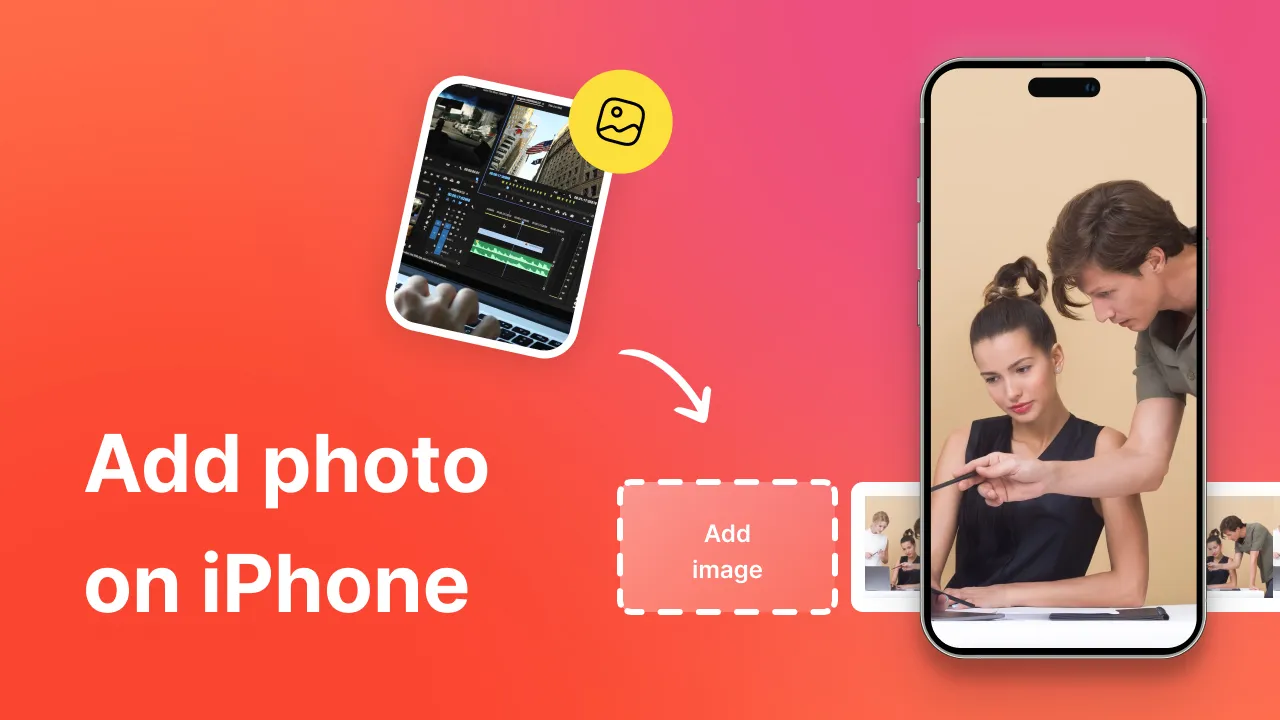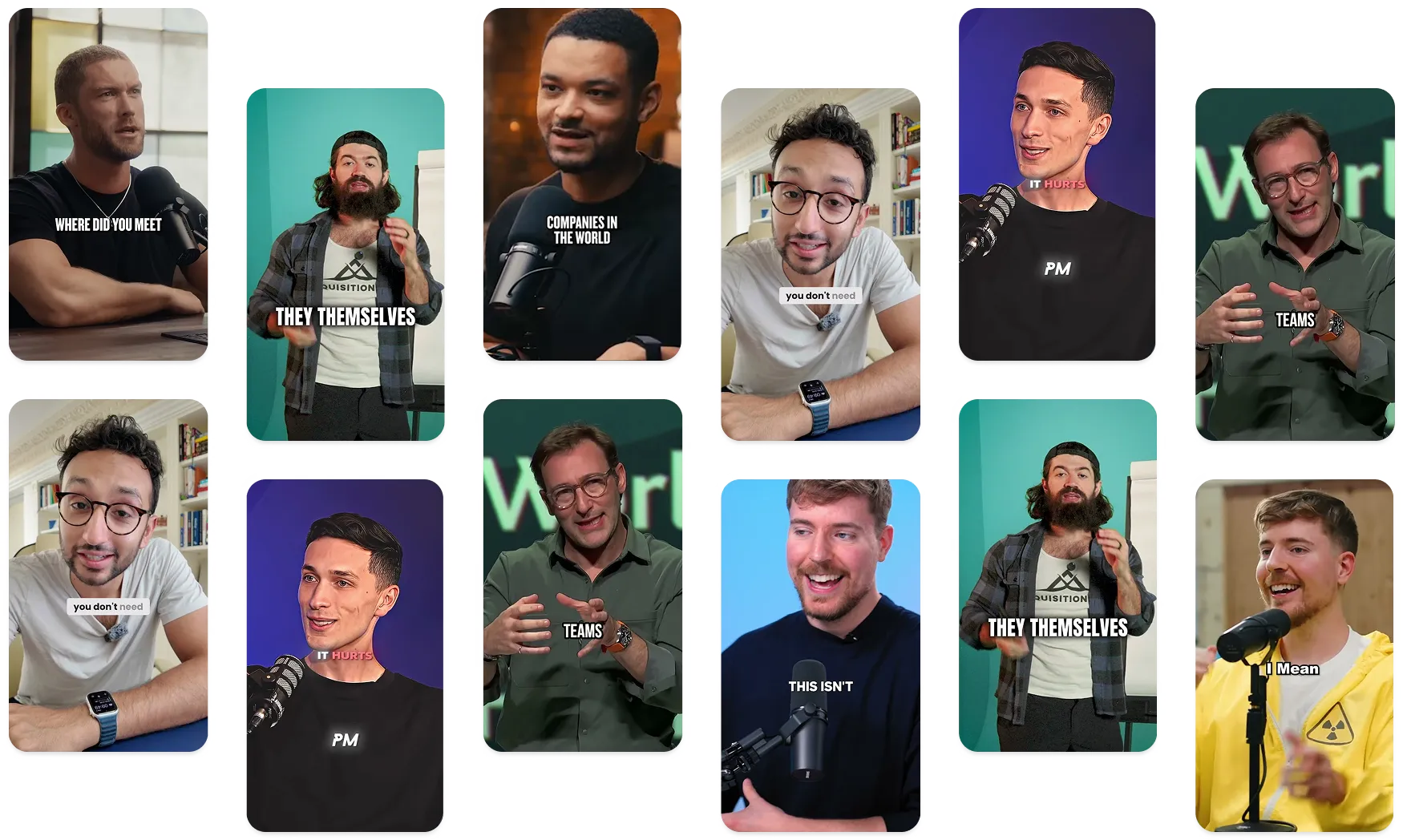Whether you’re an all-round, one-person shop, shooting, editing, and marketing your own video content or managing clients, the majority of us are in our favorite video editor every day. From raw footage, to editing, designing, liters of coffee,.. you get it.
The juggle is real.
AI video editing in the browser has been a boon for many of us but the tides are shifting. Producing video is slowly getting an upgrade and the space is heating up. Enter AI agents, automation, integration, and video editing APIs - all to automate video creation.
All your favorite video editors have either integrated these workflows, or are working on it. We’re yet in the early phase. So, as you search for automated workflows you might stumble upon Creatomate and Shotstack.
They are similar but different, so let’s bring some clarity on Creatomate vs Shotstack. They’re both popular cloud-based, video editing APIs.
Let’s understand Creatomate and Shotsctack before get into the nitty gritty.
Shotstack: A video editing API
Shotstack’s pitch? Full control, full customization.
Functionality & features
- Video editing API capabilities: Think of Shotstack as After Effects in code. You’re dealing with JSON configurations, REST APIs, and fine-grained video asset control.
- Automate video production with templates: You can build templated workflows, chain edits, and dynamically change variables, great for scale.
- High-quality rendering and dynamic video creation: Outputs are solid, render quality is production-level, and it’s AWS-backed.
Summing up Shotstack
Shotstack is a “hardcore” dev approach (the “hardcore” devs might cringe at “hardcore“). You’ll need to roll up your sleeves, deal with rendering queues, and manage infrastructure complexity. Shotstack is ideal if you’re building your own video editor on top of it.
Ideal user type
You’re a developer working on integrating either white lable video editing. These are mostly SaaS enterprises. Think custom design, planning, prototyping, product development.
This is certainly not me. I fall more in the Creatomate camp.
Creatomate: Simplifies video creation
Creatomate flips the script. It’s more “designer-friendly”, leaning into no-code and drag-and-drop.
Creatomate features & benefits
- No-code video editor with templates: A user-friendly studio for marketers and creators who want to automate without touching code.
- Cloud-based solution: It’s built for cloud video editing, so there’s nothing to install. Just API keys and web-based templates.
- Social media integration: Handy for cranking out automated stories, Reels, and ads for platforms like TikTok and Instagram.
Summing up Creatomate
Creatomate is great if you want to build personalized videos from spreadsheets or run automations via Zapier without a developer. In fact, Creatomate falls under the no code approach.
Ideal user type
Somewhat technical and never shies away from learning new software but are not hardcore developers coding up custom apps on VS code. If you’re a creator and editor ready to automate - then this is the perfect blend.
Think of Cratomate as a Wix and Shotstack as building a custom website. Wix is easy for anyone with some base level technical skills well as if you want to build a custom website, you’ve got to know how to code - or be patient with ChatGPT or Claude.
So comparing Shotstack vs Creatomate is like comparing apples to oranges. You just need to figure out the user type you are, or your needs and choose the right tool
Alternatives to Shotstack
If you work in Terminal, VS Code, and version control, etc.
सबमैजिक
Submagic AI video editing API allows you to programmatically generate AI-powered captions for your videos. Whether you’re building a video editing platform, content management system, or automating your video workflow.
The API provides enterprise-grade video processing capabilities. No matter your workflow, it’s a breeze to set up and is well documented.
Rendi
Rendi is sleek, template-focused, and designed for performance. It trims a lot of the complexity Shotstack throws at you, while keeping flexibility.
- Pros: Quick setup, template-based logic, decent API docs.
- Cons: Limited community, fewer advanced editing controls.
If Shotstack is a build-your-own studio, Rendi feels more like customizing Canva with code.
Alternatives to Creatomate
सबमैजिक
Submagic is an apple and an orange - for metaphoric continuity. Prefer to not use an API, you’d rather hook into Zapier, n8n, Google Drive and such with drag and drop no code automation domination? Then Submagic integrations is the workflow you need.
It is by far the better alternative to Creatomate.
Shakr
Shakr is big in the brand video automation world. Think enterprise-level personalization, white-label options, and campaign-ready tools.
- Solid template offerings and video automation
- Focused on high-scale ad generation
- Less suited to indie creators or quick workflows
It’s powerful, but not nimble. Pricing and integration options tend to favor large marketing teams over individual creators.
The role of APIs in video editing
What is a video editing API?
At its core, a video editing API is a toolkit that lets you automate video editing tasks through code, like stitching clips, generating subtitles, or adding voiceovers.
Instead of opening a timeline and dragging things around, you send a REST API call with a JSON payload that says: “Here’s a template, here’s the text, here’s the b-roll. Go render.”
Use cases? Countless.
- E-commerce: auto-generate product videos
- Edtech: personalized learning content
- Agencies: bulk video production for clients
- SaaS: user onboarding with name-personalized videos
The future of video automation
Trends in video generation and automation
Video automation is going full AI.
We’re not just talking templates anymore. We’re talking:
- AI voiceovers
- Dynamic subtitles in multiple languages with a subtitle translator
- Auto-zoom and motion effects
- Generative AI video content based on prompts
- Web-based, async workflows with tools like Zapier
And here’s the kicker, these features aren’t “coming soon.” They’re already shipping on platforms like Submagic.
Submagic’s API lets developers plug into a fully loaded, creator-first editing engine. With 3-click integrations and AI-augmented editing, you can:
It’s a full online video editor - API accessible.
We compiled a list of the best video editing APIs that you should read next.
Choosing the right tool for your needs
| लक्षण |
Shotstack |
Creatomate |
सबमैजिक |
| Video editing API |
विकसित |
Limited |
Streamlined + AI-powered |
| No-code tools |
Not available |
Available |
Available (3-click interface) |
| टेम्पलेट्स |
JSON-driven |
Web-based |
AI-generated and customizable |
| Cloud-based |
Yes (AWS) |
हाँ |
हाँ |
| REST API |
हाँ |
हाँ |
हाँ |
| Personalization |
Dynamic data support |
Spreadsheet logic |
AI-powered magic clips |
| Zapier integration |
Manual setup required |
Available |
Native support |
| AI features (zooms, subtitles) |
Not available |
बुनियादी सुविधाएँ |
Built-in and automatic |
| SDK & documentation |
Developer-focused |
No-code friendly |
Simple and fast onboarding |
| Ideal for |
Developers, engineers |
Marketers, non-coders |
Creators, agencies, developers |
So... which one should you choose?
- If you’re building a platform and need granular control, Submagic or Shotstack is your sandbox.
- If you’re a marketer trying to automate social media videos, Submagic or Creatomate is super handy video automated agent.
And that’s the Submagic edge. Marketing teams within an enterprise can use Submagic to create longform or short form reels with b-rolls, background music etc. At the same time, the team that sits in dark rooms staring at code can also use Submagic.
Okay, the dark rooms is how developers are presented in movies with generic HTML in Sublime editor to show “hardcore”.
Try the Submagic API. It’s built for creators, devs, and growth hackers who hate wasting time.
Let the bots do the busywork. You focus on making magic.
















.png)



.webp)

.png)






